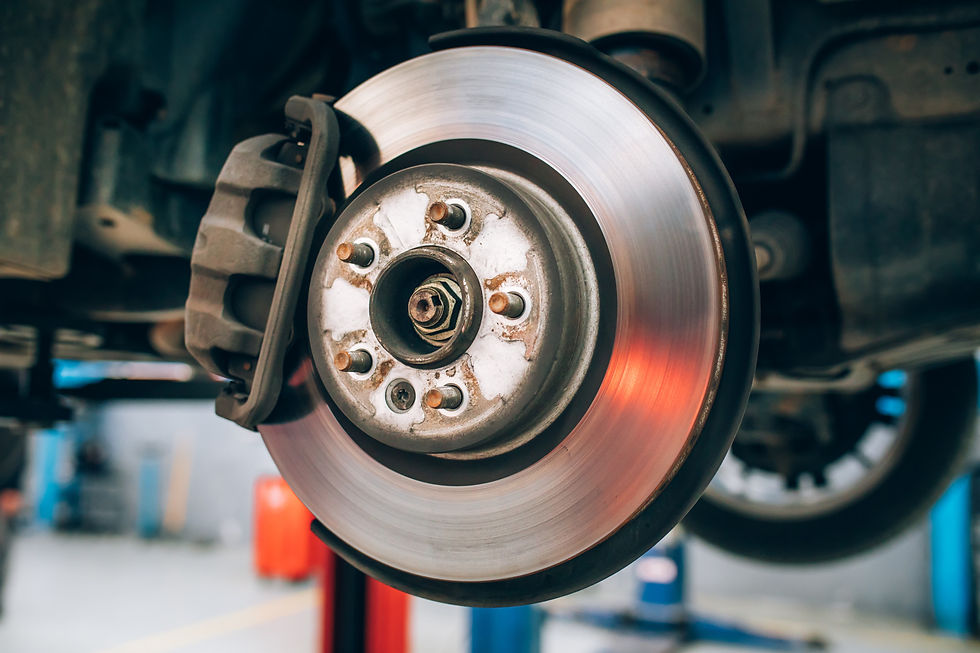Do you know when it's time for new brakes for your vehicle? Click here to do a brake check and learn everything you need to know about brakes.

When you think about your car's brake problems, you might have the gut reaction to automatically assume the worst - brake failure.
In fact, only around 5% of car crashes are the result of brake failures. That does not mean that a regular brake check is not critical to the overall performance of your car.
With winter fast approaching, you might consider taking your car to a professional and having your brakes checked. If you have an interest in learning more about the signs of brake problems and how to do a brake check, then keep reading on.
How Brakes Work
Brakes are a bit more complex than you would initially think. When you step on your brake pedal and come to a halt just inches away from the rear bumper of the car in front of you, there are a lot of components going on behind the scenes.
Once you press your brake pedal, a signal transmits to where your brake fluid is. The brake fluid is what triggers pressure for activating your brakes.
Your car brakes will either be a disc or drum. When brakes become worn out - or don't work properly - it is usually a problem with the brake fluid or you need a brake pad replacement.
How to Check Brake Fluid
Brake fluid levels are checked by brake service specialists. It is highly advised that you bring your car to a specialist versus checking it out yourself. Seeing a specialist ensures that you aren't missing a critical leak in the system.
Brake fluid comes in three different categories that are outlined by the Department of Transportation (DOT). These include DOT 3, DOT 4, and DOT 5. DOT 3 and DOT 4 are the two common brake fluids you will see in a service and maintenance shop.
DOT 4 is a bit pricier but can tolerate more heat and tends to absorb less water than its counterpart.
Without brake fluid, your brake pads and sensors would not receive the input coming from you pressing on the brake. It is an extremely important part of the braking system and requires maintenance at least every one to two years.
At the one or two-year mark, mechanics will often suggest that you replace your fluid. Again - this is a tedious and more complex process than you would think and requires you to completely drain the brake fluid first before filling it up with new fluid.
It is also extremely corrosive for your car paint, skin, and clothing. For these reasons, it is best handled by professionals.
Checking Brake Fluid Levels
You can check your brake fluid levels before taking it into a shop. In fact, brake fluid checks should be done in conjunction with other simple car maintenance tasks like air filter changes, oil changes, and tire rotations.
To check your brake fluid, simply locate the reservoir that holds your brake fluid. Technically, this fluid does not get used up the longer you drive your vehicle. It can drop when your brake pads need changing, but it shouldn't be by alarming levels.
When you remove the dipstick, the level should read between the add and full lines. If it is below the add line, then you might have a leak in the system and you should take your car in immediately. If the fluid is dark, then it can indicate it needs to be flushed and refilled with new fluid.
Additionally, if you are driving your car and the brakes feel different than usual, such as a spongy feeling, then you should take your car into the shop.
How to Check Brake Pads
Unfortunately, there is no set timetable on when your brake pads need replacing. People who live in more mountainous regions or have severe weather may find that they replace their brakes sooner than people who live in temperate climates.
Hills play a significant role in brakes wearing out. The most important aspect you can do in ensuring your brakes are working properly is listening.
Typically, when your brakes need replacing, there will be a loud screeching sound when you press on your brake pedal. This is usually indicative of the initial signs your brake pads are wearing out.
If you ignore those warning signs, you might start hearing a grinding noise. This means that your brake pads have worn all the way down to the metal backing. Not only is this dangerous, but it will be a much pricier fix than simply replacing your brake pads.
Additionally, sometimes foreign objects become lodged where your brake pads are. This can mimic many of the similar sounds that indicate a brake pad replacement. It is still better to play it safe versus sorry, and a quick stop-over with a brake specialist should quickly determine what the problem is.
Other signs that your brakes need replacing are:
Rattling noises
Your brake pedal vibrates
The car pulls to one side
Checking your car brakes by yourself is difficult and can require special equipment. If you notice any of these characteristics in your car, the easiest solution is performing a quick Google search for a brake check near me.
Get Your Brake Check
A simple brake check can save you time, money, and costly errors. Brakes are a critical part of how your car functions and can quickly lead to long-term damage if it is not addressed regularly.
A qualified brake specialist can keep your brakes up and running smoothly. If you need a brake check, then don't wait any longer - schedule a service with us today.

Thanks for this guide! I often dream about brakes not working and that's why I started investigating my car, hoping everything is okay with my brakes!